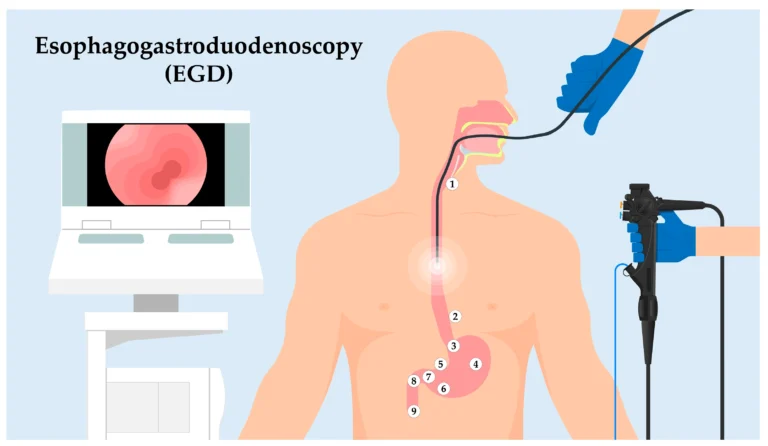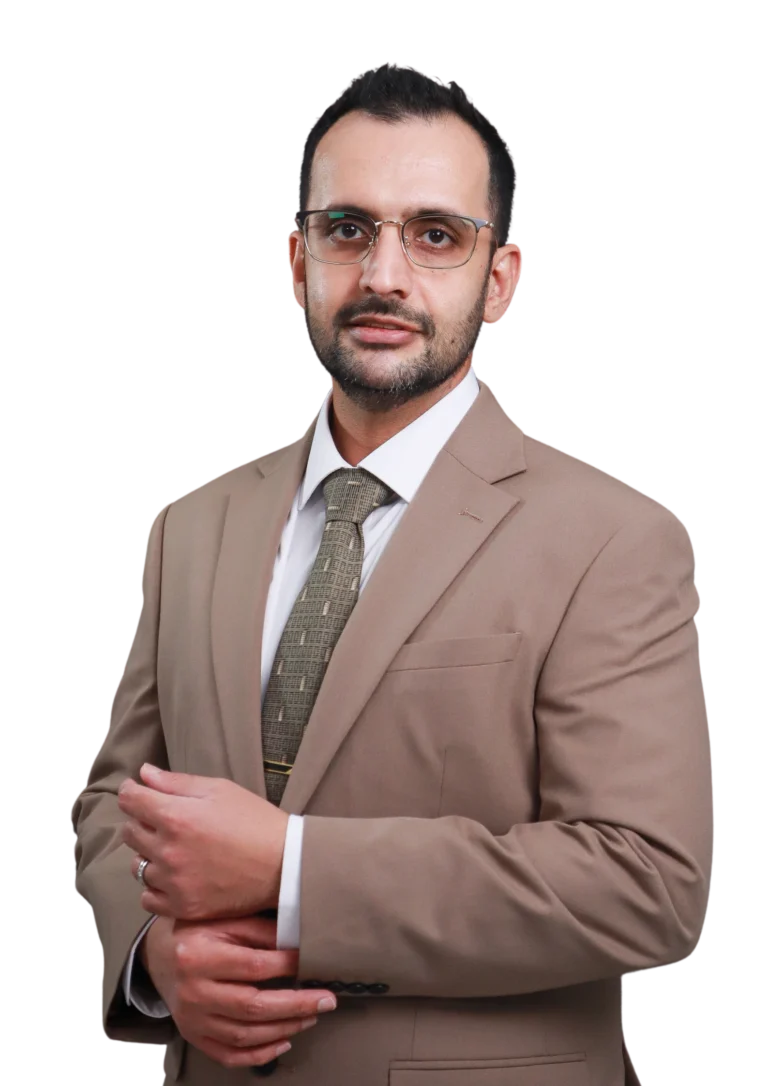Upper endoscopy, also known as esophagogastroduodenoscopy (EGD), is a procedure that allows doctors to examine the lining of the upper part of the gastrointestinal tract, including the esophagus, stomach, and duodenum.
An upper endoscopy, also known as esophagogastroduodenoscopy (EGD), is a minimally invasive diagnostic procedure that allows your doctor to examine the upper part of your gastrointestinal (GI) tract, including the:
Esophagus
Stomach
Duodenum (the first part of the small intestine)
This procedure is performed using a thin, flexible tube called an endoscope, which has a light and high-definition camera at its tip. The camera transmits live images to a monitor, allowing your specialist to detect abnormalities with precision.
An upper endoscopy helps diagnose and sometimes treat a wide range of digestive disorders, such as:
Chronic heartburn or GERD (gastroesophageal reflux disease)
Stomach ulcers or bleeding
Difficulty swallowing (dysphagia)
Unexplained nausea or vomiting
Persistent upper abdominal pain
Suspected stomach cancer or esophageal cancer
Celiac disease or inflammation
If necessary, tissue samples (biopsies) can be taken during the procedure for laboratory analysis.
To ensure clear visibility during the exam, you will be asked to fast for 6 to 8 hours before the procedure. Your doctor will also advise if any medications need to be paused temporarily.
Preparation steps include:
Avoiding all food and drinks the night before
Informing your doctor about blood thinners or diabetes medications
Arranging for someone to accompany you home after the procedure (if sedation is used)

You’ll be given a sedative or local anesthesia to minimize discomfort.
The endoscope will be inserted gently through your mouth and guided down the esophagus into the stomach and duodenum.
Air may be introduced to expand the stomach lining for better visibility.
If necessary, tools may be used through the scope for biopsies or to stop bleeding.
The procedure is safe, generally painless, and takes 15–30 minutes.
Recovery is usually quick. After the procedure:
You’ll rest until the sedative wears off
You may experience a mild sore throat or bloating (from introduced air)
You can usually eat and return to normal activities the next day
Your specialist will review the findings with you and advise on next steps or treatments if needed.
Upper endoscopy is considered a low-risk procedure when performed by experienced gastroenterologists. Possible complications (rare) include:
Minor throat irritation
Bleeding (especially if biopsy or polyp removal is done)
Reaction to sedative
Perforation (extremely rare)
We use advanced, sterilized equipment and international safety protocols to ensure your procedure is as smooth and safe as possible.
Book a consultation if you experience:
Chronic acid reflux or burning sensation
Frequent nausea or bloating
Difficulty swallowing
Blood in vomit or black stools
Unexplained weight loss
Early diagnosis can prevent serious conditions. Upper endoscopy is a critical tool in early detection of cancer, ulcers, and gastric diseases.

At Bariatric Surgery Malaysia, all upper endoscopy procedures are performed by board-certified gastrointestinal and bariatric surgeons with extensive experience. Our center is equipped with the latest endoscopic technology to ensure precision, comfort, and fast recovery.
I was experiencing stomach pain for months. Dr Navin Man performed an upper endoscopy and diagnosed my gastritis accurately. The procedure was quick, painless, and professional.
Dr Navin Man helped me finally understand my acid reflux symptoms. The upper GI endoscopy showed signs of GERD, and now I’m on a proper treatment plan. Highly experienced and reassuring.
I had persistent bloating and nausea. Dr Navin Man recommended an upper endoscopy. He detected a gastric ulcer early, which probably saved me from future complications. Excellent care!
As someone with a family history of stomach cancer, I went for routine screening. Dr Navin Man was incredibly thorough during the upper GI endoscopy. He explained everything clearly.
My symptoms pointed to an H. pylori infection. Dr Navin Man used endoscopy to confirm the bacteria and started treatment immediately. Accurate diagnostics and compassionate service.
I have chronic reflux and was at risk for Barrett’s esophagus. Dr Navin Man’s upper endoscopy confirmed the diagnosis and now I’m under careful monitoring. He’s knowledgeable and precise.
My digestion issues were frustrating. Dr Navin Man performed a gastroscopy which revealed mild gastritis. His explanation and follow-up care were excellent. Very gentle and professional.
I chose to do an upper endoscopy with Dr Navin Man due to risk factors. The procedure was smooth and reassuring. Early detection matters and he truly knows his field.
During the endoscopy, Dr Navin Man took a biopsy to investigate my ongoing reflux and discomfort. He was calm, professional, and thorough. Very trustworthy gastro specialist in Malaysia.
I had chest pain that mimicked heartburn. Dr Navin Man did an upper GI scope to rule out serious issues. It was done with care and skill. Great doctor for endoscopic evaluations.